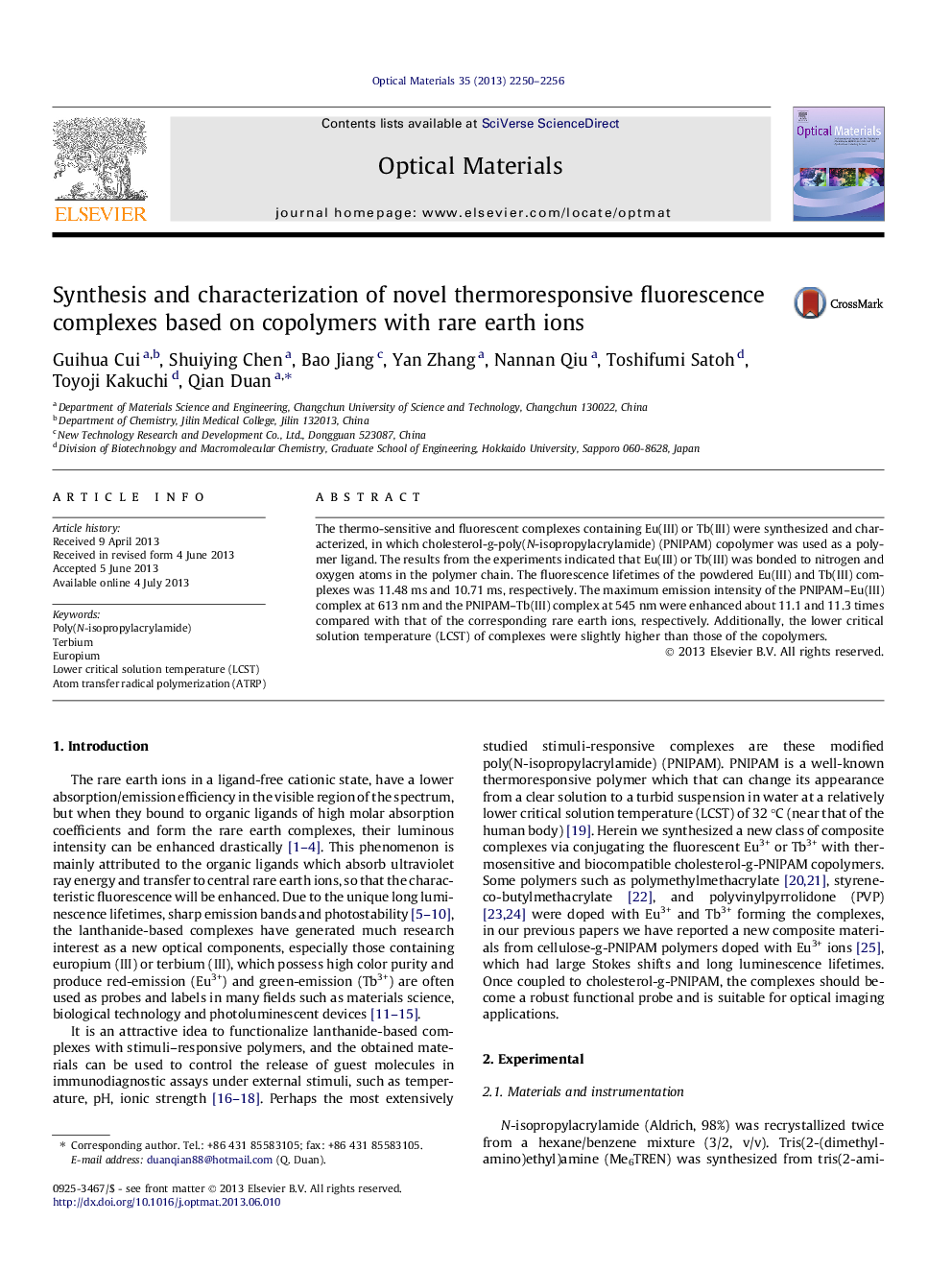| Article ID | Journal | Published Year | Pages | File Type |
|---|---|---|---|---|
| 1494900 | Optical Materials | 2013 | 7 Pages |
•A novel copolymer of PNIPAM and cholesterol was synthesized via ATRP.•Eu(III) or Tb(III) was chelation with nitrogen and oxygen atoms of the copolymer.•The complexes exhibited excellent fluorescence performance.•The complexes had a LCST slighter than copolymer.•The fluorescent performance of complexes was temperature sensitive.
The thermo-sensitive and fluorescent complexes containing Eu(III) or Tb(III) were synthesized and characterized, in which cholesterol-g-poly(N-isopropylacrylamide) (PNIPAM) copolymer was used as a polymer ligand. The results from the experiments indicated that Eu(III) or Tb(III) was bonded to nitrogen and oxygen atoms in the polymer chain. The fluorescence lifetimes of the powdered Eu(III) and Tb(III) complexes was 11.48 ms and 10.71 ms, respectively. The maximum emission intensity of the PNIPAM–Eu(III) complex at 613 nm and the PNIPAM–Tb(III) complex at 545 nm were enhanced about 11.1 and 11.3 times compared with that of the corresponding rare earth ions, respectively. Additionally, the lower critical solution temperature (LCST) of complexes were slightly higher than those of the copolymers.
